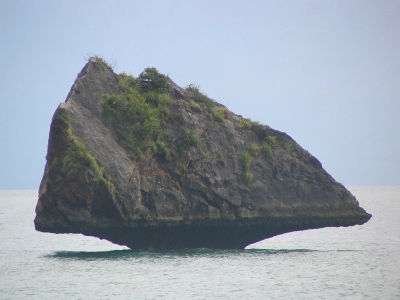It is hypothesized that a Mayan canoe surrounded by animal and human bones was found deep in an underwater cave and used for ceremonial purposes.

Archaeologists have hypothesized that the canoes excavated in 2021 from the ruins of the ancient Mayan civilization were 'used for rituals.' A large number of bones of 38 bodies such as humans, dogs, and turkeys have been found around the canoe.
Antigua canoa descubierta en el salvamento arqueológico del Tren Maya habría tenido uso ritual

Maya canoe surrounded by animal and human bones found in 'portal to the underworld' in Mexico | Live Science
In 2021, a wooden boat and bones were discovered deep in an underwater cave 4.6 meters below the water surface around the ancient Mayan ruins of Chichen Itza in Mexico. The boat measures 2.15 meters, 45 cm wide and 36.5 cm high. Surrounding bones included the leg bones of what appeared to be a human female, as well as the bones of animals such as armadillos, dogs, turkeys and eagles. At the time of its discovery, it was thought that it might have been used for water supply, or simply to pump up groundwater.

A research group at the National Autonomous University of Mexico, which conducted research on this relic, announced the results of the research again on June 28, 2023, and from the large number of armadillo bones and the presence of human feet, this canoe was used during ceremonies. It may have been placed in the cave intentionally.
Researchers say armadillos are known to be excellent swimmers, able to hold their breath underwater and use their claws to propel themselves forward, and were used by the ancient Maya people as caves and cenotes. was believed to be the entrance to the underworld, so it is speculated that the ancient Maya thought that by placing an armadillo, ``animals wearing armor entered the underworld.'' About.

Alexandra Viard, an archaeologist at the French National Center for Scientific Research, said: ``This view may also be plausible, as some Mayan ceramics depict armadillos as 'seats of the gods.' said.

It is also believed that the canoe itself was used as part of sacred rituals. This is because the bow and stern of this canoe were very heavy, difficult to navigate in rapid currents, and likely not seaworthy.
Originally estimated to be between 830 and 950 AD, carbon analysis has shown that the ship's wood is from the 16th century. Since it has been pointed out that there may be microplastics that affect dating from the area around the site, it is planned to dive again in the future and collect additional samples of submerged trees and bones.
Related Posts:
in Posted by log1p_kr







